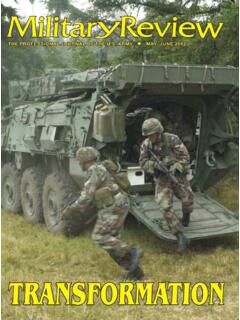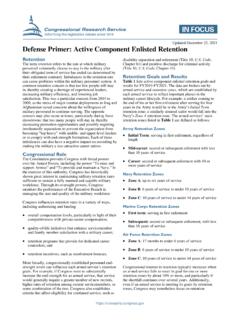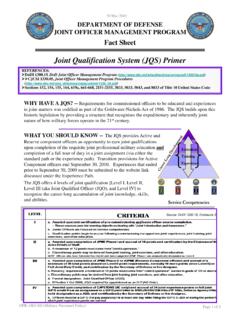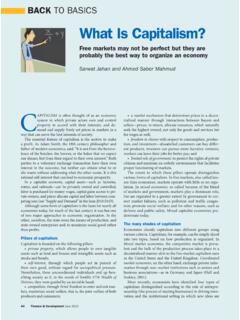Transcription of Through the Lens of Cultural Awareness - Army University …
1 Through the lens of Cultural Awareness : A primer for US Armed Forces Deploying to Arab and Middle Eastern Countries William D. Wunderle Combat Studies Institute Press Fort Leavenworth, KS 66027. Cover photo courtesy of US Army. Photo by TSgt Jeremy T. Lock, 22 June 2006. Through the lens of Cultural Awareness : A primer for US Armed Forces Deploying to Arab and Middle Eastern Countries William D. Wunderle LTC, US Army Combat Studies Institute Press Fort Leavenworth, KS 66027. Library of Congress Cataloging-in-Publications Data Wunderle, William D., 1962- Through the lens of Cultural Awareness : a primer for Armed Forces deploying to Arab and Middle Eastern countries / William D. Wunderle. p. cm. Includes bibliographical references. 1. United States--Armed Forces--Foreign service--Middle East-- Handbooks, manuals, etc. 2. Military art and science--Cross- Cultural studies.
2 3. Arab countries--Social life and customs. 4. National characteristics, Arab. 5. Cultural Awareness --Study and teaching--United States. I. Title. II. Title: primer for Armed Forces deploying to Arab and Middle Eastern countries. 2006. 2006038175. For sale by the Superintendent of Documents, Government Printing Office Internet: Phone: toll free (866) 512-1800; DC area (202) 512-1800. Fax: (202) 512-2250 Mail: Stop IDCC, Washington, DC 20402-0001. ISBN 0-16-077466-7. Foreword This Combat Studies Institute (CSI) Special Study is unique in that it focuses more on culture than on history. The CSI objective, however, remains unchanged to provide manuscript length historical studies rel- evant to the leaders of an Army at War. We are, therefore, pleased to offer Through the lens of Cultural Awareness : A primer for US Armed Forces Deploying to Arab and Middle Eastern Countries by Lieutenant Colonel (LTC) William D.
3 Wunderle. One of the distinguishing characteristics of the Long War, as the Global War on Terrorism is now known, is the Cultural environment in which it is being fought. In truth, however, the US Army has routinely operated in unfamiliar Cultural environments throughout its long history. The conditions in the Middle East today may be the most difficult in a very long time, and the Army is making tremendous efforts to become more effective. Among the key points the author makes in this study is the need for leaders to understand how culture affects military operations. This work also represents a slight departure from the norm for his- torical studies from CSI. As noted, it is not purely a work of history. This study goes beyond our normal practice of offering insights from the past as it offers specific policy prescriptions for tomorrow. LTC Wunderle briefly touches on some of the historical roots of Iraqi and Middle Eastern cul- ture, but he focuses primarily on Cultural conditions in Iraq today.
4 He also presents ideas for modifying a number of the US Army's military deci- sionmaking processes and training programs. Given the need for rapid action during wartime, we felt this departure from the historical craft was justified and were eager to accept this manu- script, written while the author was completing an academic fellowship for the Army, for publication. We at CSI believe this Special Study will contribute significantly to the Army as it conducts operations in the Long War. CSI The Past is Prologue! Timothy R. Reese Colonel, Armor Director, Combat Studies Institute iii Preface Conducting the Global War on Terrorism (GWOT) and projecting United States (US) influence worldwide has meant an increasing number of US diplomats and military forces are assigned to locations around the world, some of which have not previously had a significant US presence.
5 In the current security environment, understanding foreign cultures and societies has become a national priority. Cultural understanding is neces- sary both to defeat adversaries and to work successfully with allies. As indicated by recent experiences in Iraq, Afghanistan, and Somalia, under- standing Islamic cultures is particularly important. This document defines a way US military leaders can prepare for and conduct military opera- tions Through the lens of Cultural Awareness . It provides a method for help- ing military commanders, staffs, and trainers engage successfully in any type of operation with an emphasis on postconflict stability operations. It also suggests modifications to the traditional intelligence preparation of the battlefield (IPB) and the military decisionmaking process (MDMP) to address the analytical difficulties posed by the conduct of military opera- tions within and among different cultures.
6 Initially, this research was undertaken to support military training con- ducted at the Joint Readiness Training Center (JRTC) and the National Training Center (NTC). In its final form, however, this research will serve to inform additional studies as well as projects, conferences, and train- ing conducted throughout the Department of defense (DOD), Department of State (DOS), and miscellaneous intelligence agencies. This study will be of interest to US Armed Forces and intelligence community personnel planning for or conducting operations in Arab and Middle East countries. It will also be of interest to any armed forces, law enforcement, or intel- ligence community personnel that need to assess the intentions, motiva- tions, and decisionmaking styles of persons from other cultures.. Acknowledgments Several people were integral to the successful completion of this proj- ect by providing information and guidance throughout the research effort.
7 In particular, I would like to extend a special note of thanks to Kristin Leuschner from the RAND Corporation, who was able to take my briefing slides and disparate notes and combine them into a well-formulated, con- gruent document while offering valuable suggestions and improvements. I. would also like to thank Tom Szayna for his professional advice, mentor- ship, and tireless efforts in reviewing this research as it progressed. Likewise, I appreciate receiving input from Bruce Hoffman, Eric Larson, and Scott Gerwehr, also from the RAND Corporation, who each provided professional advice, friendship, and an initial review of this research; the staff of the defense Language Institute Foreign Language Center; Major Ben Connable of the USMC Cultural Awareness Working Group; and the staff of the Combat Studies Institute especially Ms. Betty Weigand, whose final edits and layout made this book a reality.
8 In addi- tion, a number of my Arab and Islamic friends and colleagues were instru- mental in verifying this research; at their request, I have not included their names. I am additionally indebted to the formal reviewers of this project for their constructive criticism and comments. Finally, I want thank my wife, Vicki, a Middle East specialist in her own right, who provided valuable research assistance, editorial com- ments, and reviews this document would not have been possible without her support. Please note that I am solely responsible for all omissions or mistakes. vii Contents Page Foreword ..iii Preface ..v Acknowledgments .. vii Chapter 1. 1. Why Culture Matters .. 2. Cultural Awareness in Current Military Training and Doctrine ..3. Purpose and 5. 2. A Conceptual Model for Understanding Culture .. 9. Culture and Cultural Awareness Defined.
9 9. A Conceptual Model for Developing Cultural Cultural Influences .. 13. Cultural Variations .. 13. Cultural Manifestations .. 18. Using the Cultural Awareness Model to Understand Cultures ..18. 3. A primer for Understanding Arabic Culture .. 23. Cultural Influences .. 24. History and Foreign Heritage .. 25. Islam and the Role of Religion .. 27. Background .. 28. Islamic Views of War .. 30. The Tribal System .. 31. The Arabic Language .. 35. Cultural Variations .. 36. Behaviors .. 36. Values .. 38. Cognition .. 41. Cultural Manifestations .. 41. Case Study: Iraq .. 44. Conclusion .. 50. 4. Incorporating Cultural Awareness into US Military Training and Doctrine ..57. The Need for Cultural Awareness in Training and Doctrine ..57. ix Page Integrating Cultural Awareness into Military Training ..61. Training Initiatives Currently Underway ..62. Additional Changes Needed to Standardize Cultural Awareness Training Across the Army.
10 63. Integrating Cultural Awareness into Military Doctrine ..65. The Need for Cultural Awareness in Intelligence- Gathering ..66. Changes Needed to Integrate Cultural Awareness into IPB Doctrine ..71. Changes Needed in the Deliberative Planning Process and Execution Phase ..78. Conclusion ..81. 5. Summary and Conclusions ..87. The Way Ahead ..88. About the Author ..89. Glossary ..91. Bibliography ..95. Appendix A. Cultural Factors in US Joint and Army Doctrine ..103. B. The 27 Articles of Lawrence .. 115. C. Preparing for Negotiations in the Middle East ..121. D. The Implications of Cultural Factors for US. Operations in Somalia ..133. Figures 1. Cultural Awareness 2. Taxonomy of culture ..12. 3. Levels of context sensitivity inherent to various cultures ..15. 4. Taxonomy of Middle Eastern culture ..24. 5. The Arab World ..26. 6. Arabic tribal system.















